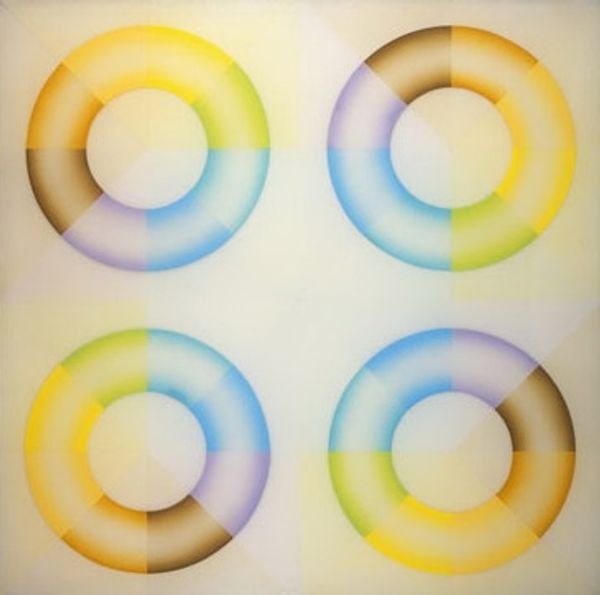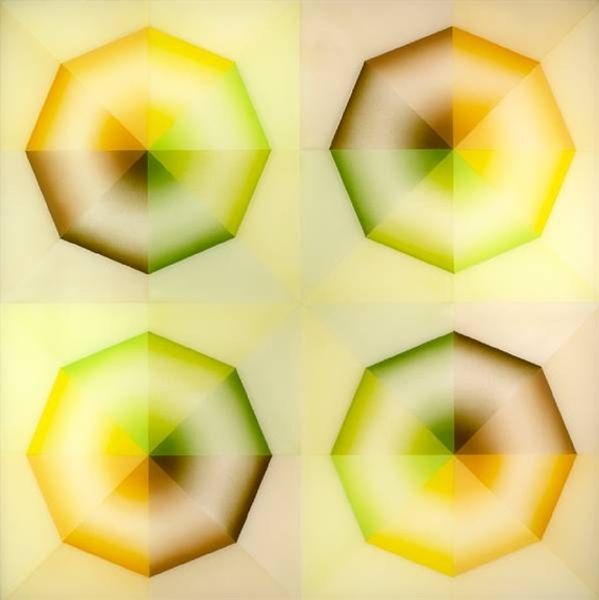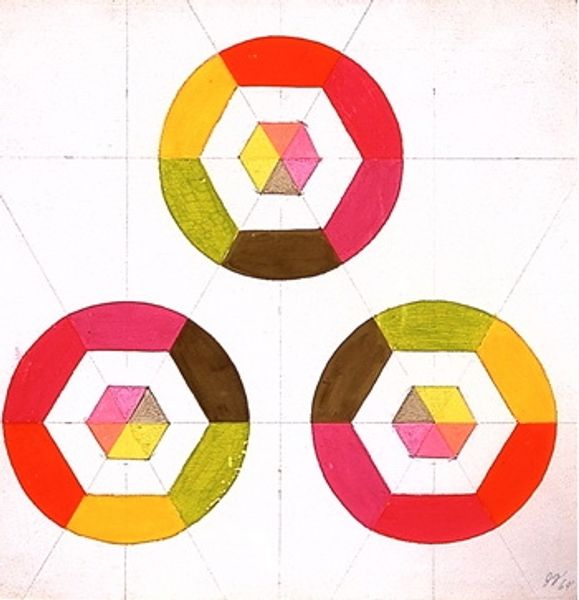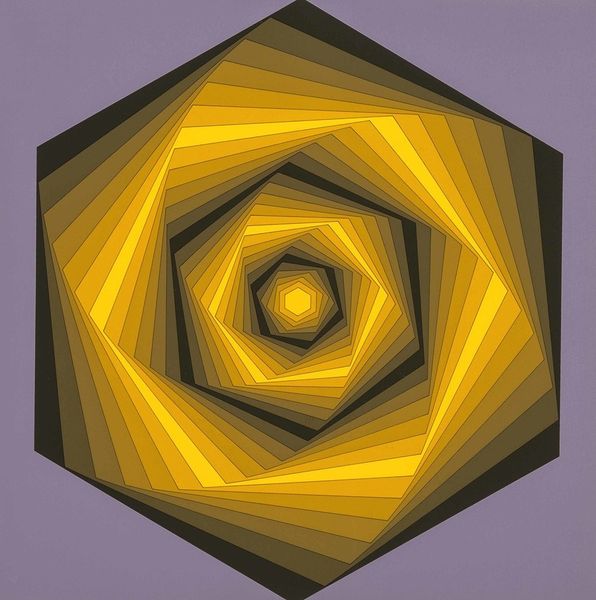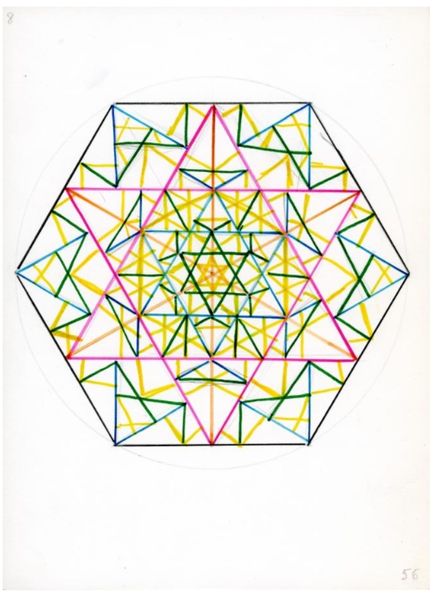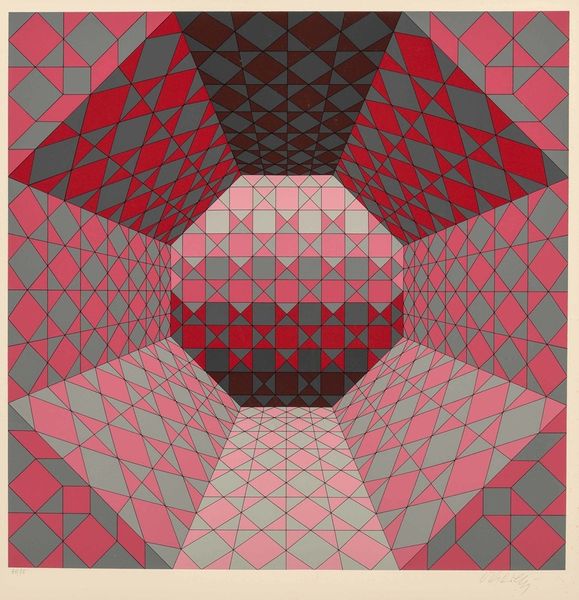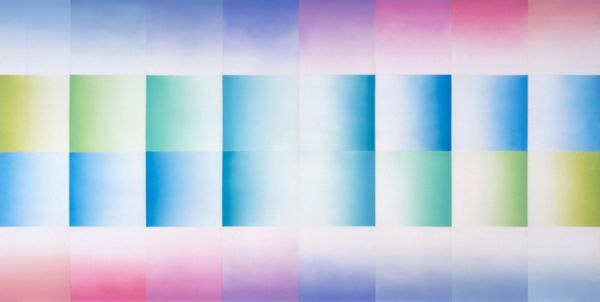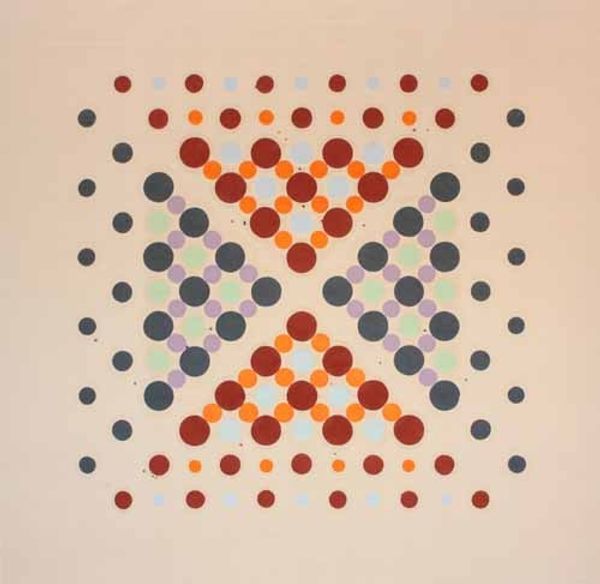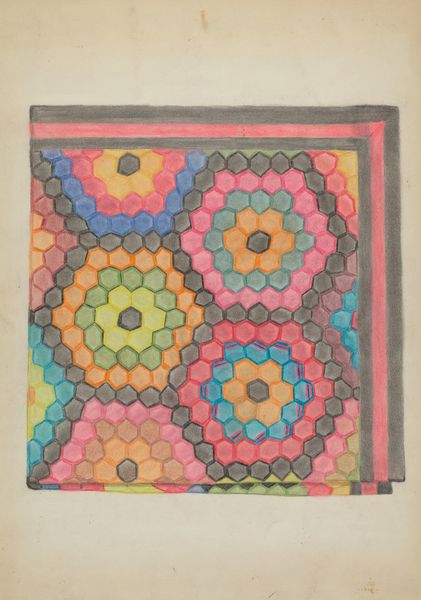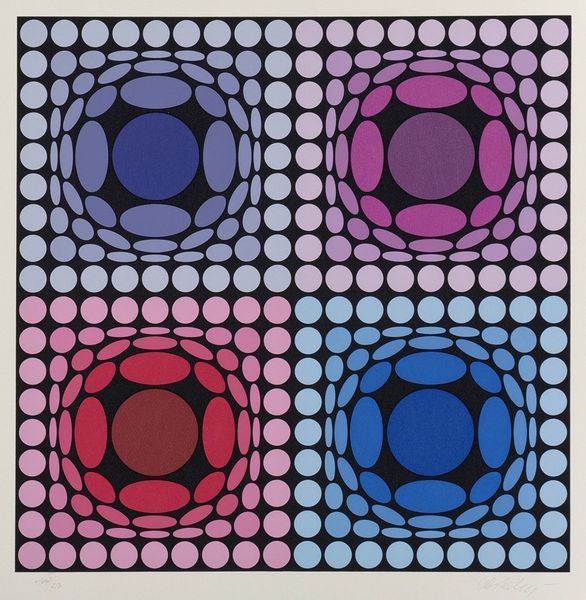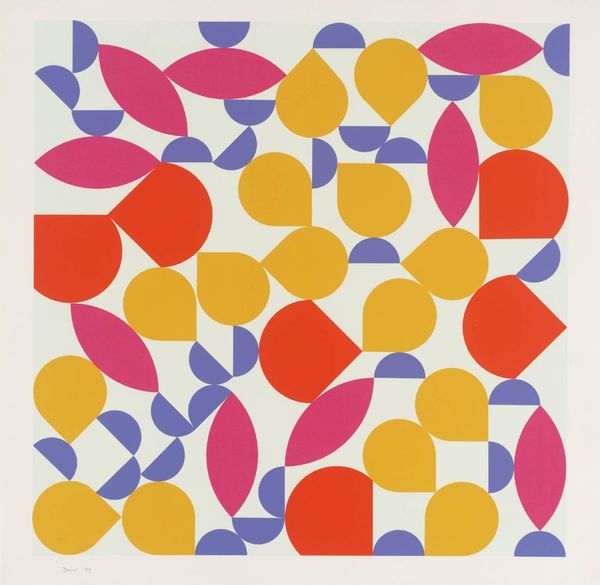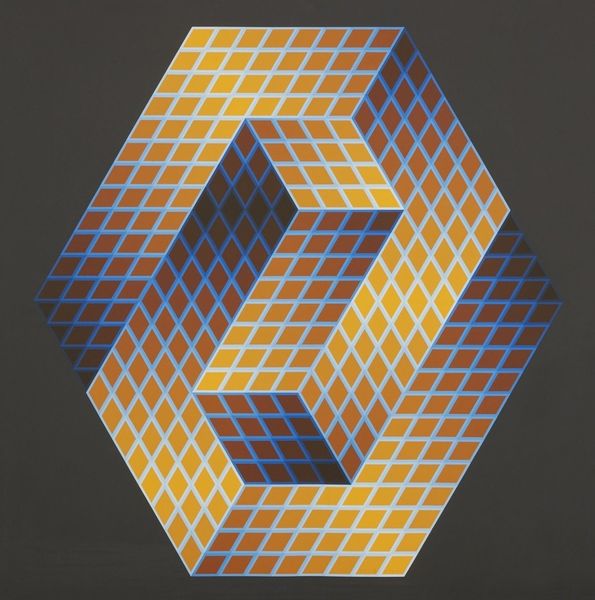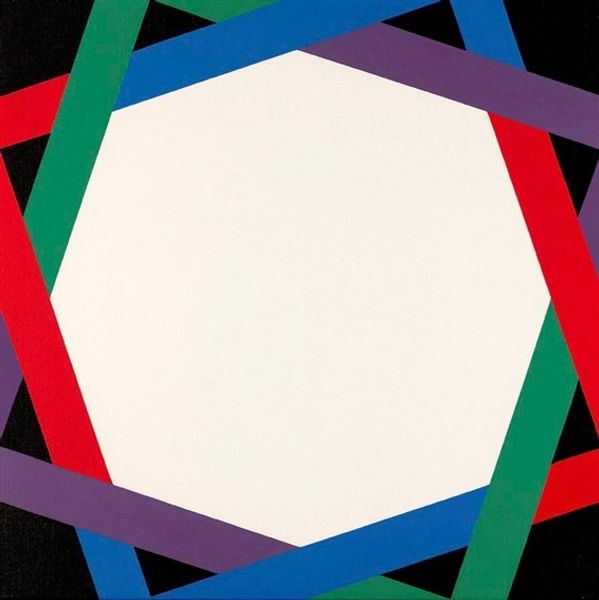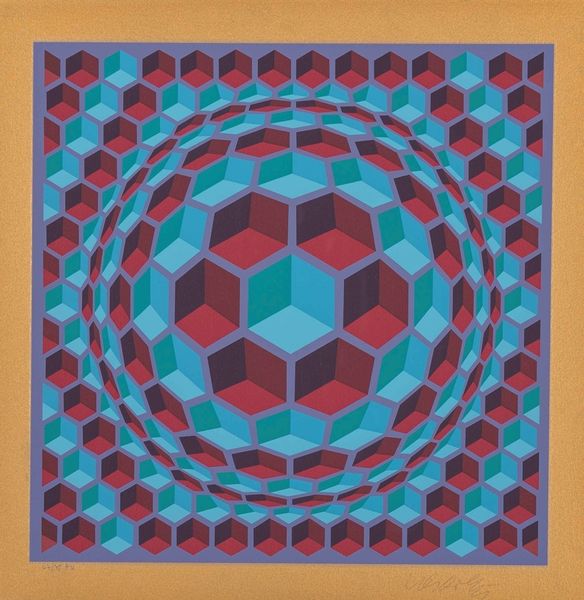
acrylic-paint
#
acrylic-paint
#
geometric pattern
#
abstract pattern
#
organic pattern
#
geometric
#
abstraction
#
pop-art
#
line
#
hard-edge-painting
Copyright: Judy Chicago,Fair Use
Curator: Judy Chicago’s “Pasadena Lifesavers Red #5,” painted in 1970, features four octagonal forms rendered in subtly shifting gradients of red, gold, and blue hues on a white ground. What do you make of it? Editor: At first glance, they resemble some kind of futuristic sweets floating in space, their shapes somehow both rigid and softly glowing. There’s an interplay between geometric precision and ethereal color that’s very inviting. Curator: Indeed. Chicago, influenced by California’s car culture and finish fetish, was interested in pushing the boundaries of abstraction, focusing intently on industrial processes and the perfect smoothness achievable with new acrylic paints. Editor: It is interesting how the serial nature of this hard-edge painting connects with Pop Art’s embrace of mass production and everyday imagery, though filtered through a lens of geometric abstraction and feminine sensibility. This work was created around the time of her involvement with the Feminist Art Program at CalArts, wasn’t it? Curator: Exactly! While perhaps not overtly feminist in its imagery, we must understand that challenging the male-dominated art world through embracing "feminine" colors and prioritizing precise craft as valuable labor represented an assertive stance in the patriarchal art system. The perfectly blended gradients speak to hours of painstaking work and control. Editor: You know, seeing it through that lens reveals a subversion. The smoothness isn't just about aesthetics. It’s about staking a claim within traditionally masculine spaces of artistic production, using its own tools, and succeeding at its own game. Curator: Precisely. And while visually cool and seductive, Chicago encourages us to think deeply about the complex relationship between women’s art, industrial processes, and patriarchal assumptions about labor and value. Editor: Understanding the historical framework adds weight to these apparently weightless shapes, charging them with social and political energy. It underscores the way abstract form can embody deeply felt experiences. Curator: And how technique, particularly in Chicago’s manipulation of new industrial paints, redefines both the status of “feminine” craft and the means of high art production. Editor: These floating Lifesavers end up providing more sustenance than you might initially think!
Comments
No comments
Be the first to comment and join the conversation on the ultimate creative platform.
